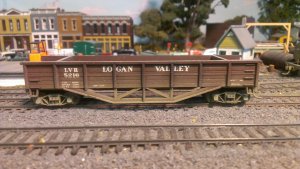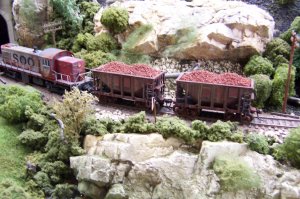I have seldom altered the weighting of my cars. I did strip out the electronic lighting package and the floor weights from my Walthers heavyweight passenger cars as I had 3% grades on my second layout and needed them lighter. I had broad curves, so I wasn't worried about string-lining.
When I first received my all-metal HO Lionel Challenger years ago, I had done some on-line research about the engine and knew already of some potential problems. On the advice of one user, I opened the tender, removed the cube of weight placed at one end (about twice the dimensions of a regular sugar cube), and gently placed cotton batting around the speakers, filling the space under the shell. He felt it improved the sound, and I didn't know the difference after I replaced the shell...it sounds good. Or, still sounds good after the batting. I followed his advice because the shell, frame, and all those centipede axles made for a truly heavy tender already. To this day the locomotive, a fine one if short on the details one would expect these days on a premium sound steamer, pulls around my layout like a Swiss watch. I'm very happy with this locomotive, and do not regret my minor modifications.
I found, in an earlier forgettable experiment, that no amount of added weight would help a couple of sprung skeleton cars meant to carry logs around my track system. So, while I have a history of actually lightening car weights, I have a very short one with sprung trucks.
There is something to gain by doing what the prototype does...compile a consist with empties nearer the back of the consist where the pull on their couplers at either end will be the least. If you place lighter cars (empties and flat cars) close to the tractive power, you have the locomotive's effort on one end and all the drag weight down hill on the other. This is true even on nearly level tracks as there is inertia and friction in the rolling wheel sets.



